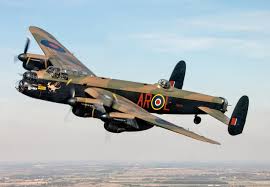The Lancaster Bomber: A Pillar of WWII Aviation History

Introduction
The Lancaster Bomber, a British heavy bomber developed by Avro during World War II, played a crucial role in the conflict. Known for its distinctive silhouette and versatility, the Lancaster became a symbol of British resilience and innovation in aerial warfare. Understanding its significance provides insight into the technological advancements of the era and the impact it had on military strategies during wartime.
Main Body
First entering service in 1942, the Avro Lancaster was designed to perform strategic bombing and quickly established itself as one of the most effective bombers of the war. With a maximum bomb load capability of 22,000 pounds, it could carry a range of munitions, including the famous bouncing bomb used during the Dambusters Raid in 1943. This operation aimed to destroy vital dams in Germany, showcasing the Lancaster’s operational prowess and the innovative tactics employed by the RAF.
Throughout its service, over 7,300 Lancasters were built, and they played significant roles in major bombing campaigns such as the Battle of the Ruhr and the bombing of Berlin. The aircraft was renowned for its durability and performance, capable of flying at night and in adverse weather conditions, which allowed the RAF to conduct crucial missions with increased stealth.
Today, the legacy of the Lancaster Bomber is celebrated through various memorials and in the air displays by surviving aircraft, which are now preserved in museums and restoration projects. The Battle of Britain Memorial Flight, for example, still operates a Lancaster, continuing to honour the service of those who flew and maintained the aircraft. The bomber’s place in history is also reinforced by many films and literature recounting the bravery of its crews.
Conclusion
As we reflect on the Lancaster Bomber’s contributions to World War II, its legacy serves as a reminder of the technological breakthroughs of the time and the human stories of courage and sacrifice associated with it. The continued interest in the Lancaster, both in history and aviation circles, underscores its significance as not merely a tool of war but a cultural icon. In the coming years, as we commemorate significant anniversaries related to WWII, the Lancaster Bomber will undoubtedly continue to be a focal point of remembrance and education, illustrating the importance of preserving history for future generations.
